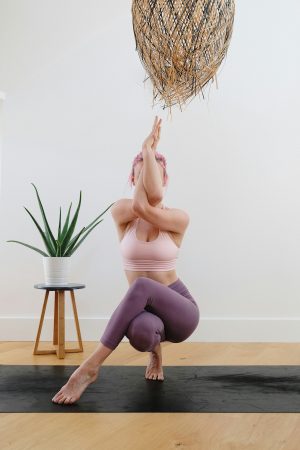You need the exercise but you can’t get to a gym, so design your own routine to fit in with your life!
Exercise is not a negotiable. And there is really no excuse not to get those muscles working and those lungs pumping, heart beating and that sort of thing. Even if you don’t have the time or budget for a gym membership. Or even gym equipment.
You can design your own fitness regime that you can do at home, at the park, on the beach. Gosh, even in the traffic island.
But first things first: have a check-up with a healthcare professional before starting any new exercise routine, especially if you have any medical conditions or injuries. This is important, so don’t skip it.
Many of us have some idea of what to do, but if you’re an exercise newbie and need a bit of help in creating a workout plan, you could book a sesh with a personal trainer or use online resources and apps. If you know a friendly gym bunny, ask for some pointers.

Unsplash / Rachel Moore
8 steps for creating your own fitness routine
Creating a personalised fitness routine can be a great way to make sure you are meeting your specific fitness goals and that it fits your needs.
1. Determine your fitness goals
Do you want to lose weight, build muscle, improve your cardiovascular health, or increase your flexibility? If you know your goals, you can pick the right exercises.
2. Assess your abilities
Think about your body composition, movement abilities and current fitness level. This will help you set realistic and attainable fitness goals, taking into account your stamina, strength, flexibility and body composition.
3. Choose your exercises
For example, if you want to build muscle, focus on strength-training exercises such as weightlifting. If you want to improve your cardiovascular health, opt for running, cycling or swimming.
4. Work out how often you can exercise, and for how long each time
This will depend on your goals and your schedule. Aim for at least 30 minutes of moderate-intensity exercise a day, or 75 minutes of vigorous-intensity, five days a week. Newbies, start with shorter sessions and gradually increase the duration and intensity over time.

Unsplash / Eduardo-Cano Photo
5. Create a plan
You’ve got your exercises and you know when it can fit into your day, so now create a plan that outlines your routine. Remember the rules – warm-up and cool-down exercises must be part of it.
6. Make sure it’s balanced
It needs to include strength training, cardio and flexibility exercises.
7. Track your progress
Record your workouts and monitor your results. It’ll help you stay motivated and make adjustments as needed. ‘Record’ does not only mean film it; go old school and get a pen and paper and write down what you did and the effect it’s having on your bod.
8. Weekly and daily workouts
Set specific exercises, sets, reps and rest periods. You’re on your way; now plan which days you’ll exercise, and which days you won’t – and try to be consistent.

Unsplash / Sonnie Hiles
Tips to get you on your way
No one wants to be caught in the usual traps and give up after a few days, so set yourself up for success. Here are a few helpful ways to get you on your way.
- Set up an exercise schedule and stick to it.
- Include a variety of exercises.
- Create a balanced routine that includes strength training, cardio and flexibility exercises.
- Set realistic and specific goals.
- Avoid pushing too hard too soon.
- Be consistent with your routine.
- Track your progress and adjust your routine as needed.
- Wear appropriate clothing and shoes.
- Use proper form and technique.
- Incorporate rest days and muscle splits (focus on different muscle groups on different days).
- Fuel your body with nutritious foods.
- Get a workout buddy or accountability partner to help keep you on track.
- Listen to your body.
And most importantly, don’t compare yourself to others; your body, your goals, your routine, your own progress.
Written by Lorraine Kearney.
ALSO SEE:
Blurry vision? Here are 5 signs you may be struggling with astigmatism
Feature Image: Unsplash / Lyfefuel

